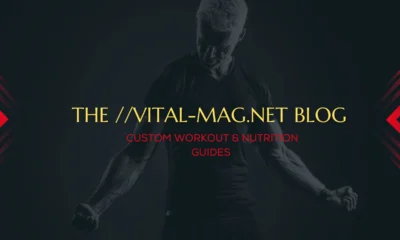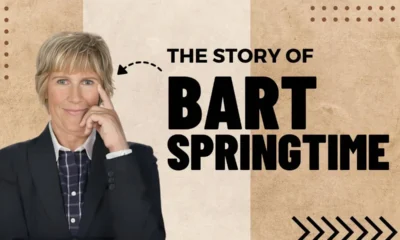GENERAL
Windsock: The Ultimate Guide to Understanding Wind Direction and Speed
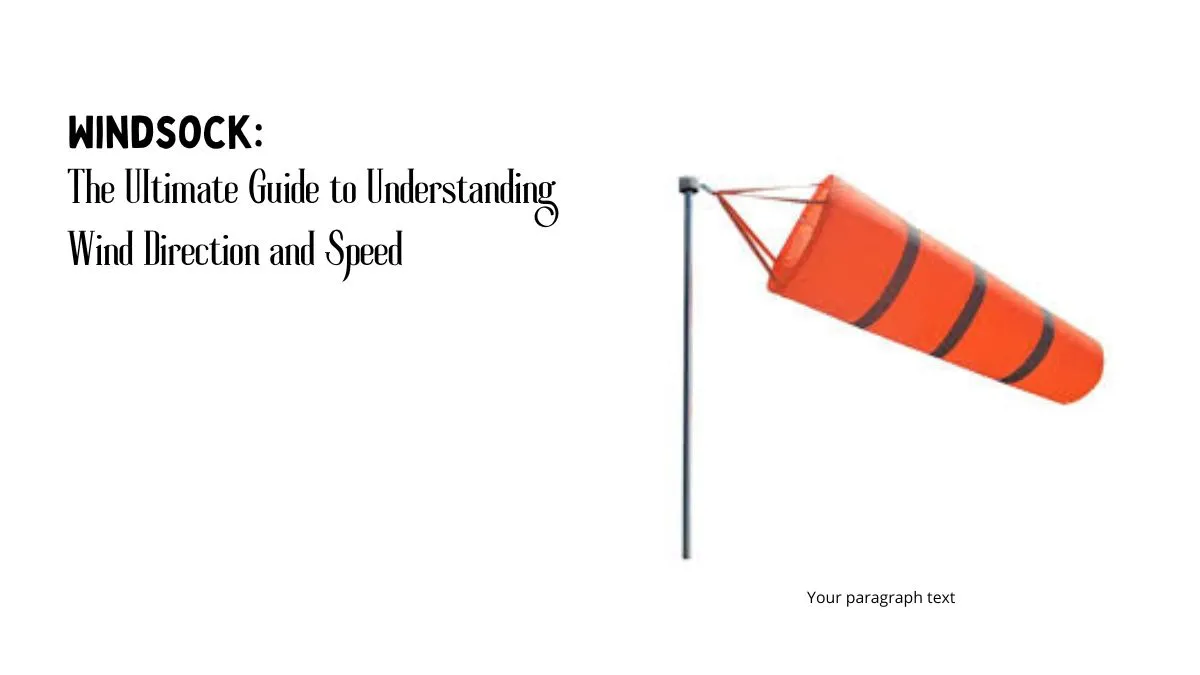
Ever noticed those fabric tubes at airports, fluttering in the wind? That’s a windsock. It might look simple, but it’s a powerful tool. A windsock tells us where the wind is coming from and how strong it is. Pilots, sailors, and weather experts rely on it. Even industries handling gases use it for safety. Why? Because wind direction matters. A sudden shift can change everything. You don’t have to be a professional to use one, though. Knowing how to read a windsock can help anyone. It can make outdoor adventures safer. It’s been around for centuries, yet many still overlook its importance. Stick around. Let’s dive into the world of windsocks. You’ll never see them the same way again.
What is a Windsock?
A windsock is more than just fabric on a pole. It’s a basic yet brilliant wind indicator. It moves with the wind, showing both its direction and strength. The wider the opening, the stronger the wind. Originally, ancient Chinese and Romans used similar devices in warfare. Today, windsocks are found at airports, highways, and industrial sites. Even hobbyists use them for flying kites or paragliding. They’re not just functional; they can be decorative, too. Some businesses even use branded windsocks for advertising. They come in various materials, from nylon to polyester. Some are reinforced to withstand harsh weather. Whether for aviation, safety, or fun, a windsock remains a trusted tool. Simple, effective, and reliable—just as it should be.
How Does a Windsock Work?
A windsock works with the wind, not against it. When the wind blows, it inflates the sock, pointing in the opposite direction. That’s how you tell where the wind is coming from. The stronger the wind, the straighter the windsock. Light winds? It droops. Most windsocks are designed with multiple rings inside. These rings help keep the shape steady. You don’t need batteries. No fancy tech. Just wind and fabric. Pilots use it before landing. Factories use it for gas leak safety. Even farmers rely on it. It’s a simple science. Yet, it saves lives. Next time you see one, take a moment. It’s telling you a story—about the wind, about safety, about nature’s force.
Types of Windsocks
Not all windsocks are the same. Some are built for airports. Others for backyard fun. Aviation windsocks follow strict regulations. They need high-visibility colors, like orange and white. Industrial windsocks are often fire-resistant, used in oil refineries and chemical plants. Then there are decorative ones. You’ll see them at gardens, festivals, and even on boats. Materials vary, too. Some are heavy-duty polyester. Others are lightweight nylon. Some last years. Some fade within months. Size matters as well. Large ones are better for airports. Smaller ones work for personal use. Choosing the right windsock depends on where and why you need it. One thing’s certain: every windsock has a purpose. Know yours.
Uses of Windsocks
Windsocks are lifesavers. Literally. Airports rely on them for safe landings. Pilots check windsocks to avoid dangerous crosswinds. At chemical plants, they help detect gas leaks. Firefighters use them to track smoke direction. Even farmers watch windsocks before spraying pesticides. In sports, skydivers and paragliders depend on them. Some motorcyclists install mini windsocks on bikes. It’s not just about safety. Fishermen use them to read sea winds. Farmers check them before burning fields. Even theme parks use them for aesthetics. Windsocks do more than just wave in the wind. They guide, warn, and inform. Every gust of wind tells a story. And the windsock? It’s the narrator.
How to Read a Windsock Correctly
Reading a windsock is easy, yet it can be lifesaving. The open end always points where the wind is coming from. That’s the first rule. If the windsock is fully extended, expect strong winds. If it barely lifts, the wind is weak. Some windsocks have stripes—each section represents a different wind speed range. A half-filled windsock? Light breeze. Fully stretched? High winds. But here’s the catch: windsocks react instantly. Gusts can make them flicker unpredictably. That’s why pilots observe them for a while before deciding. Whether you’re a pilot, a hiker, or just curious, knowing how to read a windsock gives you an edge. Nature always sends signals. You just need to read them right.
Materials Used in Windsocks
Not all windsocks are built the same. The material matters. Airports prefer heavy-duty polyester—it lasts longer under the sun and rain. Nylon is another option, lightweight yet durable. Industrial sites use flame-resistant windsocks. Why? Because they deal with hazardous gases. Cheaper windsocks fade quickly. Harsh UV rays can break them down. High-quality ones come with weather-resistant coatings. Some even have reinforced stitching to withstand strong winds. A good windsock isn’t just about looks; it’s about function. A torn or faded windsock? It can mislead, creating serious risks. Choosing the right material means getting accurate readings, every time. Whether for safety or aesthetics, never compromise on quality. Winds change, but a good windsock should last.
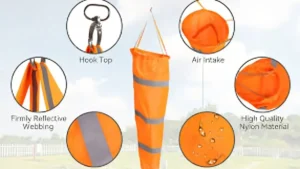
How to Install a Windsock
Installing a windsock isn’t complicated. But placement is key. Too low? It won’t catch the wind properly. Too high? It might be hard to maintain. First, pick an open space. No obstructions. Trees or buildings can block wind flow. Next, choose a sturdy pole—metal ones last longer. Some installations need rotating frames, so the windsock moves freely. Secure the pole into the ground or attach it to a stable structure. Finally, mount the windsock using clips or fasteners. Done right, it will give you accurate wind readings. A poorly placed windsock? It’s as good as useless. Take your time. A little effort means better performance, and in some cases, it can save lives.
How to Maintain and Replace a Windsock
A windsock works hard, facing sun, rain, and strong winds daily. Regular maintenance is a must. First, check for fading. UV rays weaken fabric. If colors fade, replace it—it won’t be visible from afar. Next, look for tears. Even small ones can grow fast. Strong wind can rip a weak windsock apart in seconds. Clean it occasionally. Dust and dirt make it heavy, reducing its movement. Some windsocks come with weatherproof coatings, but they wear off. Reapply if needed. Also, inspect the pole. Rust can weaken it over time. A damaged windsock is dangerous. It can give false wind readings, leading to accidents. Keep it in top shape. When in doubt, replace it.
Where to Buy the Best Windsocks?
Need a windsock? You’ve got options. Online stores offer a variety—aviation-grade, decorative, industrial. Amazon, eBay, and specialty aviation shops stock them. But quality varies. Cheaper ones fade fast. Always check reviews. Want a durable one? Go for brands that supply airports or industrial sites. Hardware stores sometimes carry them, but choices are limited. Price depends on size, material, and durability. A good aviation windsock? Expect to pay more. But it’s worth it. You don’t want one that tears after a few storms. Whether online or in-store, always prioritize quality. A windsock is an investment. Buy smart.
Conclusion
A windsock might seem like just a piece of fabric, but it’s much more. It tells a story—of wind direction, speed, and even danger. Pilots rely on them. Industrial workers trust them. Adventurers use them. Whether for safety, sports, or just curiosity, understanding windsocks gives you an edge. They’re simple yet effective, old yet reliable. With proper care, they last years. Whether buying one or making your own, a windsock is a tool worth having. Next time you see one, don’t ignore it. Watch how it moves. Feel the wind. Because sometimes, the simplest things speak the loudest.
GENERAL
Mannacote: Natural Coating for Safe Crop Protection
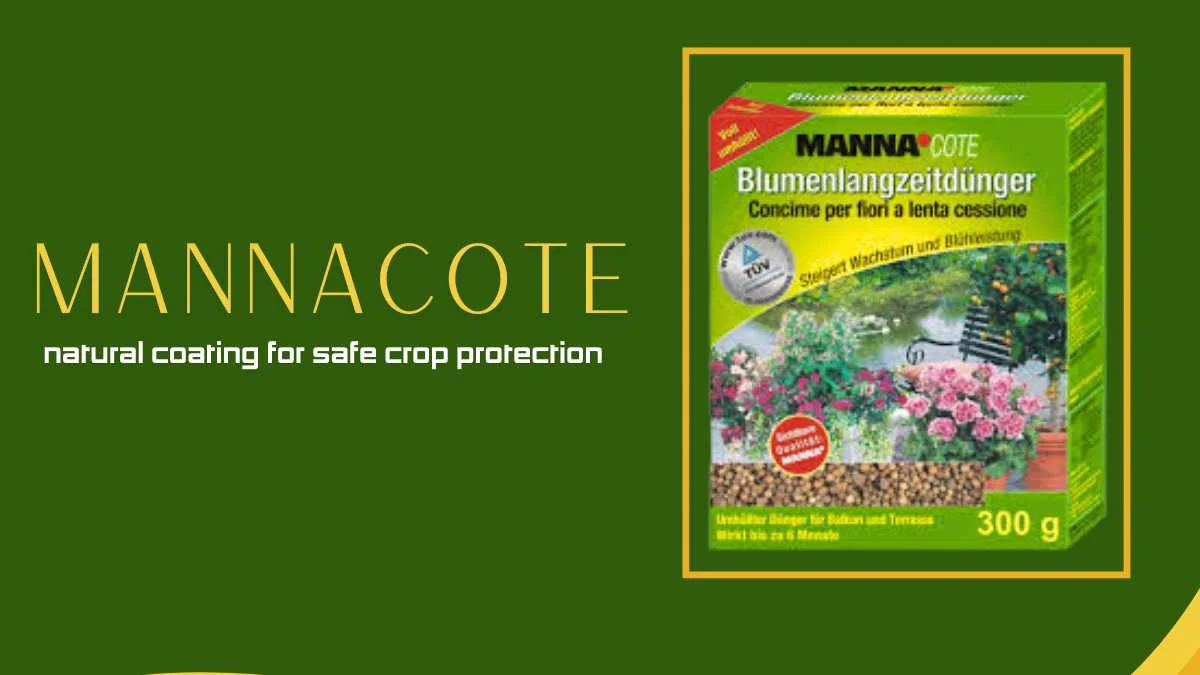
Food insecurity and plastic pollution are issues the entire world is struggling with, and the urgency of developing safe, sustainable, and scalable solutions in the field of agriculture has never been more apparent. Say hello to Mannacote, a revolutionary, edible plant-based coating. Mannacote finds applications in seed, grain, and fresh produce protection, extending the shelf life and food safety of products, eliminating toxic plastics and inorganic chemicals, and enhancing food sustainability.
What is Mannacote?
Mannacote is a protective edible bio-coating, produced out of plants that can be used to protect any agricultural commodity. It is produced using proprietary blends of starches, waxes, plant proteins, and natural antimicrobial ingredients, and can be sprayed on seeds, grains, fruits, and vegetables to guard against spoilage of the food, pest resistance, and increase shelf life.
The difference is that it serves both as a crop protection tool and a food safety packaging solution. As opposed to petroleum-based coating or chemical treatment, it is consumption-safe, hypoallergenic, and thoroughly biodegradable. This edible layer provides value during harvest, transit, or on retail shelves, and it does not add toxins or plastics to the food chain.
The Science Behind Mannacote
Mannacote is a biopolymer, which makes it efficient. The natural starches and proteins form a soft yet porous film on the outside of the seeds or the produce. This film does not allow the loss of moisture and contamination; however, it does allow natural respiration, without which the freshness of fruits and vegetables is essential.
Furthermore, this consumable layer possesses natural antimicrobials that restrict bacterial and fungal growth, i.e., either plant-derived enzymes or essential oils. This decreases spoilage, rot and decreases the necessity to employ refrigeration or chemical preservatives. Mannacote complies with international food safety standards and can be used in organic farming due to its non-toxic nature and having no allergens.
Key Benefits
- Edible & Allergen-Free: Safe to meet food and eat it
- Longer Shelf Life: Maintains freshness by inhibiting respiration and microbial growth
- Minimizes Post-Harvest Losses: Minimizes waste along the supply chains
- Biodegradable: Degrades, absorbing no microplastic waste
- Plastic-Free: Alternative to the polyethylene and wax coating, which are more sustainable
- Meets Organic Standards: GMO-free, synthetic-additive, and petrochemical-free
- Increases Export Readiness: Saves produce on long-distance transportation
Practical Uses
Mannacote can be seamlessly integrated into various stages of the agricultural and food handling process. Here are three of the most common and impactful use cases:
1. Seed Coating for Early Protection
This plant-based solution may be used on planting seeds as a thin protective layer that prevents fungal diseases, infestation by pests, and loss of moisture. This increases the germination rate and avoids synthetic seed treatments.
2. Fresh Produce Preservation
Fruits and vegetables sprayed with Mannacote keep longer and are less likely to mold because of microbial growth. Such an application is particularly useful with produce sold without cold chain facilities, in which shelf life from farm to market can be increased.
3. Plastic-Free Food Packaging Coating
Paper-based packages also use mannacote, where traditional plastic wrapping of food is used. It is also compostable, food-safe, and caters to the increasing consumer interest in environmentally friendly services in the retail industry.
Environmental Sustainability
Mannacote is not just a convenient way to protect food- it is also a significant step in a responsible attitude toward the environment. Unlike conventional plastic coatings, this plant-based solution is entirely biodegradable, degrading in the soil or compost when used without leaving any microplastics or toxins.
It is manufactured through renewable inputs of plants instead of fossil fuels, lowering the carbon footprint of food film by far. Mannacote also results in a reduction in the environmental cost of food waste, another significant driver of greenhouse gas production in the world.
What Makes Mannacote Different from Other Coatings?
| Feature | Mannacote | Traditional Coatings |
| Base Material | Plant-based (edible) | Petroleum-derived or synthetic |
| Biodegradability | 100% biodegradable & compostable | Non-biodegradable |
| Food Safety | Edible, allergen-free, non-toxic | Often inedible or chemical-laced |
| Environmental Impact | Zero plastic waste | Major source of plastic pollution |
| Use In Organic Systems | Fully compatible | Usually prohibited |
| Breathable Barrier | Yes | Often airtight or wax-heavy |
Why Farmers Are Using Mannacote
Farmers are increasingly adopting Mannacote as a cost-effective, sustainable alternative to synthetic coating and chemical treatments. Here’s why:
- Longer shelf life means better prices at local markets and fewer losses
- Improved seed protection boosts germination and early plant health
- Organic certification-friendly, appealing to health-conscious consumers
- Eco-conscious branding gives farmers a competitive edge
- Simple to apply—can be used with existing dipping, spraying, or coating systems
From small-scale growers to global exporters, this plant-based solution is proving its value as a tool for modern, sustainable farming.
The Future
The potential for Mannacote is enormous. As governments crack down on single-use plastics and global consumers demand cleaner food systems, solutions like Mannacote are no longer optional—they’re essential.
Looking ahead, Mannacote may be adapted for:
- Smart packaging integration (e.g., freshness sensors)
- Broader crop compatibility across diverse climates
- Government-supported food security programs
- Partnerships with global packaging and agri-tech companies
Mannacote represents a future where natural solutions meet scalable impact.
Conclusion
Mannacote is not a product alone; it is a movement. It assists in shielding food, waste, and minimizing detrimental plastics in the food chain by integrating nature-based innovation with real agricultural requirements.
As a farmer, retailer, or policymaker, Mannacote presents an interesting alternative to continue to be sustainable but without the performance compromise. We are going to dose our food with something superior: our crops and our future.
GENERAL
The //vital-mag.net blog: Custom Workout & Nutrition Guides
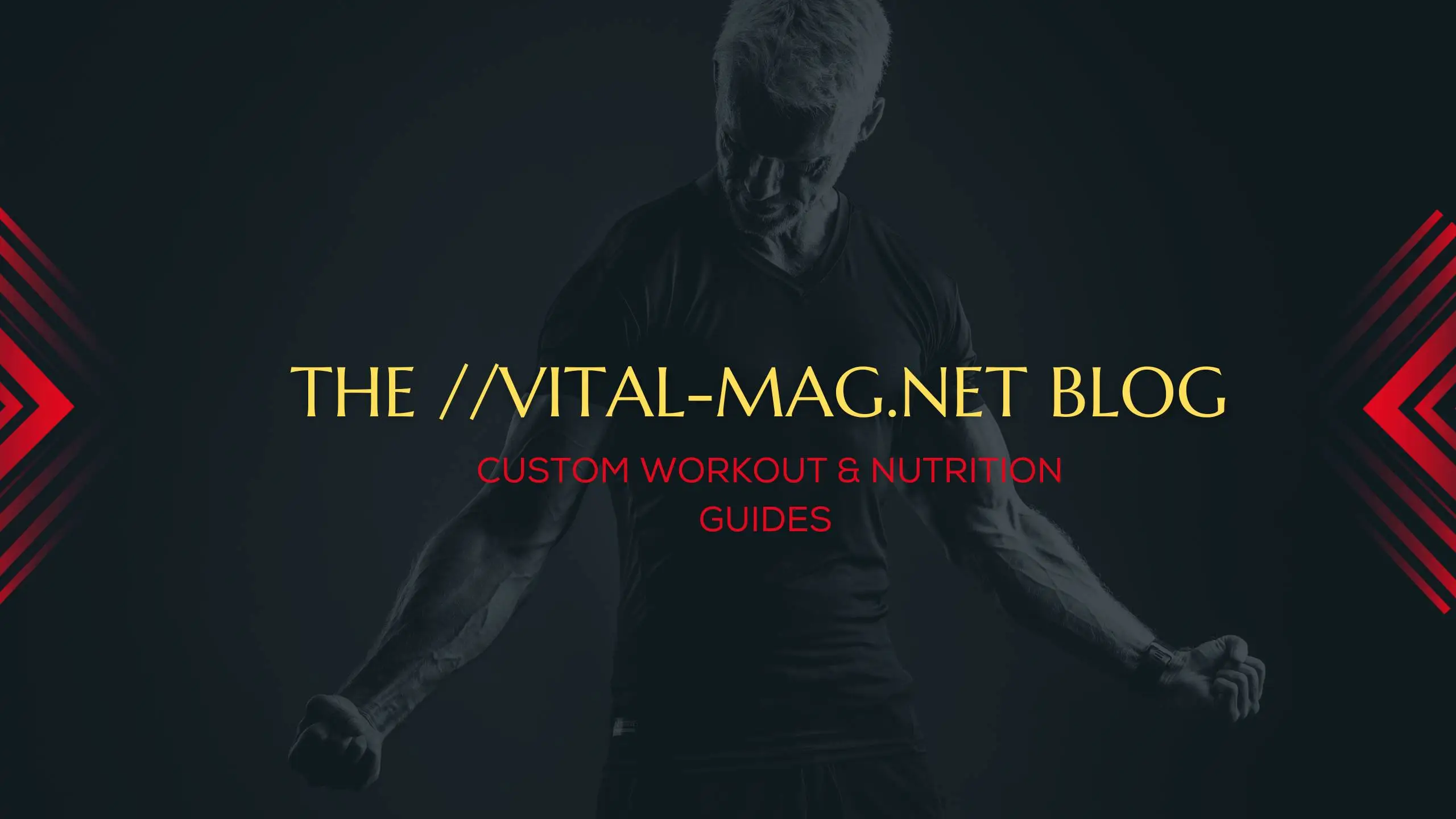
The //vital-mag.net blog is dedicated to transforming health and fitness into a sustainable lifestyle for its readers. The blog’s mission is to provide a comprehensive wellness hub that integrates expert advice, science-backed practices, and personalized support to help individuals achieve their fitness goals. With a vision to create a healthier, more informed community, The //vital-mag.net blog offers a wealth of resources tailored to the needs of diverse audiences. In a world inundated with health and fitness information, The //vital-mag.net blog offers a centralized resource where users can find reliable and personalized advice.
Core Themes of The //vital-mag.net blog
- Personalized Workout Plans
- Expert Nutrition Advice
- Certified Trainers and Professionals
- Science-Backed Approach to Wellness
Personalized Workout Plans
Personalized workout plans are specific exercise schedules aimed at an individual’s requirements, objectives, and fitness capabilities. These plans increase productivity by first identifying one’s strengths and targeting areas of inefficiency, thereby increasing general fitness and decreasing the likelihood of developing problems. The //vital-mag.net blog uses a comprehensive evaluation process to design exercise programs based on various requirements of users, such as their fitness condition, their goals, and their choices. Sophisticated software and professional instructors work together to offer individually tailored programs that change depending on the client’s performance. Working out is a comprehensive fitness program with the use of cardio, strength, flexibility, endurance activities, ample rest, and recuperation periods.
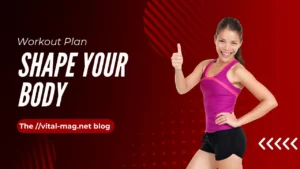
Expert Nutrition Advice
Nutrition is a very important aspect of fitness and health, especially when aiming for a certain fitness achievement. A balanced diet enables the provision of energy for workouts, muscle healing, and general health; hence, it is a major ingredient of any fitness strategy. The //vital-mag.net blog offers professional nutrition tips that include the principles of proper diet planning, correct portioning, and an individual’s nutritional requirements within the context of her or his choice of exercise regimen. It is intended to be a part of the programs that are created for individuals and their exercise routines, as well as for the improvement of health. Certified nutritionists, on their part, avail themselves by sharing nutritional consulting and preparing specific diet plans.
It guarantees that the given and advised nutrition is both evidence-based and feasible to implement. Some of the nutrition plans that are detailed in the blog include the weight loss diet, diet plans for muscle building, and many others. Sample nutrition plans for meals with set macronutrients are also provided, as well as healthy recipes. Health experts recommend certain types of foods that should be consumed in specific proportions to achieve a particular health status, weight loss, increased energy, and minimal disease risks. The focus of the advice posted in the blog is to encourage people to have sustainable health benefits beyond basic physical fitness.
Certified Trainers and Professionals
Certified trainers bring a wealth of knowledge and expertise to fitness programs, ensuring that exercises are performed safely and effectively. Their qualifications help in designing personalized plans that maximize results while minimizing the risk of injury. The //vital-mag.net blog features detailed profiles of its certified trainers and professionals, including their qualifications, experience, and areas of expertise. This transparency helps users make informed choices about their fitness support.
The certified trainers and professionals contribute by developing and adjusting personalized workout plans, providing one-on-one coaching, and offering insights based on their specialized knowledge. The certification process involves rigorous training and examinations to ensure that trainers and nutritionists are well-versed in the latest fitness and health practices. This process guarantees the quality and reliability of the advice provided.
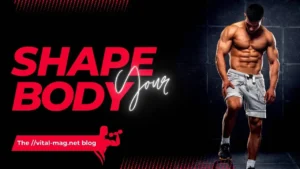
Science-Backed Approach to Wellness
Evidence-based practices in fitness involve using research and scientific data to inform exercise and wellness strategies. This approach ensures that recommendations are grounded in proven methods rather than anecdotal evidence. The //vital-mag.net blog incorporates findings from recent studies and research to validate its methods, including data on the effectiveness of various exercises, dietary strategies, and wellness practices. A science-backed approach enhances the credibility and effectiveness of fitness programs, providing users with confidence that they are following methods that have been proven to work. The blog regularly reviews the latest research and incorporates new findings into its content to ensure users benefit from the most up-to-date wellness practices.
Long-Term Sustainable Lifestyle Changes
Sustainable lifestyles are modifications of behavior that enhance the well-being of an individual and fitness standards in the long run. These changes are fundamental for sustaining progress and guaranteeing positive impacts in the long run. The //vital-mag.net blog offers options for weight loss and maintaining body fitness by setting appropriate goals and making use of incremental training. The blog helps the readers sustain change by creating a treatment plan, using motivational materials, and reading on a long-term basis.
Empowering Individuals on Their Fitness Journey
The //vital-mag.net blog employs different strategies and methods to encourage readers and enable them, such as the use of goal-setting tactics, motivational words, and tools that show the progress made. They make it easy for the users to stay immersed and compliant with their fitness-related goals. Personalization makes fitness coaching and fitness advice to be personal which makes clients or listeners to be motivated in the fitness plans that they intend to follow. Some of these include the use of fitness journals, applications, and performance indicators, which assist users in monitoring their performance and making necessary alterations.
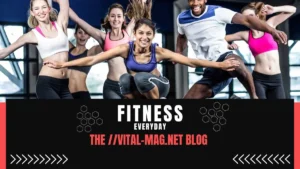
The effect of exercise and fitness cannot be achieved overnight. Losing weight, gaining muscle, and shaping the body are all processes that require long-term persistence, and most people find it difficult to persist. How can users get started and stick to exercise? A good way is for fitness websites and gyms to set up rankings for users, and rank them by winning or losing in competitions or the number and duration of exercise check-ins. The top three users can receive unique Custom Medals. Rankings are a motivation and driving force for fitness enthusiasts, to persist in exercise and achieve satisfactory results.
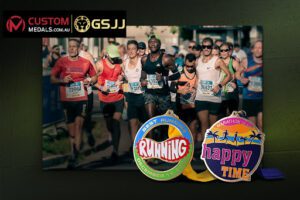
Tailored Resources for Different Fitness Levels
The //vital-mag.net blog offers tailored resources for users at different fitness levels, from beginners to advanced athletes. Each program is designed to address its target audience’s unique needs and challenges. The blog addresses diverse fitness needs by providing specialized content and resources that cater to various levels of experience, goals, and physical conditions. Examples include beginner-friendly workout plans, intermediate strength-building routines, and advanced performance-enhancing strategies.
Integration of Fitness and Wellness Technologies
The //vital-mag.net blog uses various technologies related to fitness and wellness to add to its portfolio. This also got applications for tracking their exercises, wearables to monitor their health indicators, and online platforms for creating individualized plans. It improves the administration of personalized plans by gathering updated information, facilitating changes in the workout and nutrition schedule, and integrating with user devices. Examples include escalator or elevator apps, food intake apps, and virtual coaching apps. Advantages include precise measurement of the progress, flexibility when it comes to schedules for workout sessions, and easy access to professional advice on the matter.
GENERAL
Ancient Artz: A Window into Early Civilizations
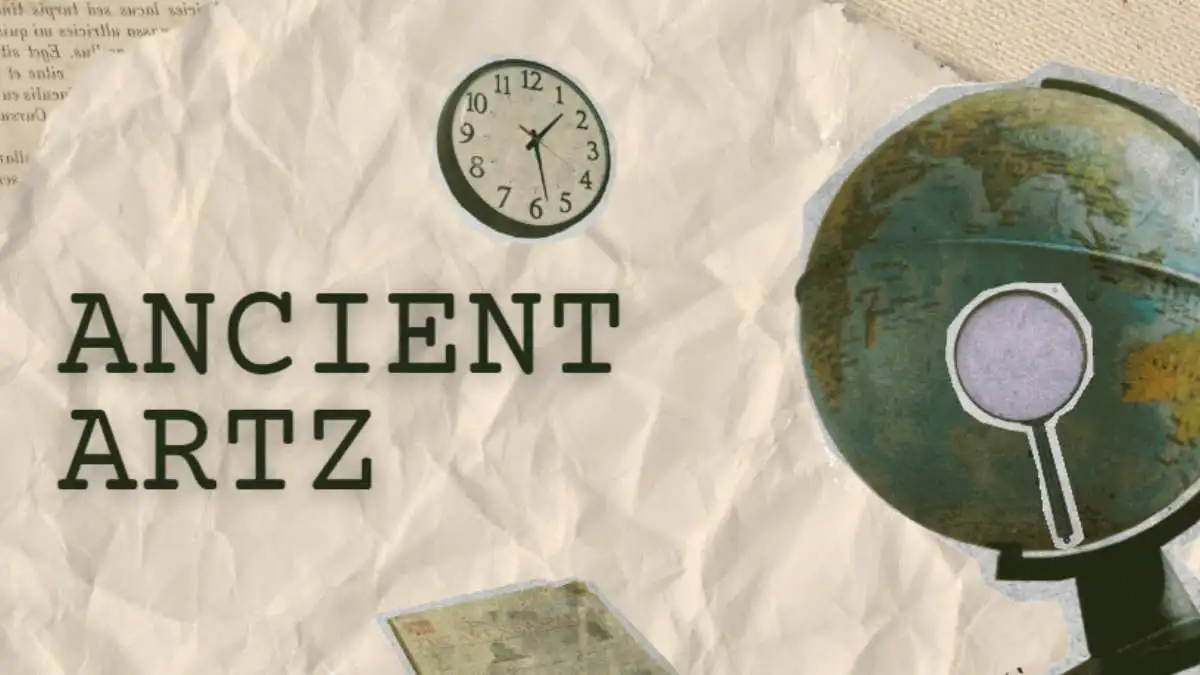
Ancient artz are artistic creations made by early peoples who self-explained their manner of life, philosophy, and science. Where then does one begin to look for this first instance of artwork, from the crude pictures drawn by early pre-historic man in the caves to the majestic status of ancient Greeks and Romans, these works of art bear testimony to man’s need to express himself and record events. Religious aspects seem to be a popular subject in ancient artz, where artz portrayed gods, worship, mythological events, real life, social status, and even the climate. It focused on the craftsmanship and material usage of objects: stone, clay, metal, and textiles were employed and used in combination providing an opportunity for artists to work with form and texture. Some of the traditions of the Ancient artz are still being followed in modern artz today, the premises that the artz necessary remain progressive arguing for the creativity and imagination of people.
Historical Context of Ancient artz
A study of the ancient artz is made effective with a study of the cultures that defined the artwork. Mesopotamia, Egyptians, Indus Valley civilization, and China developed art forms to depict their difference in cultures and social systems and similarly, Mesoamerican civilization did. Chronologically, the most important milestones in considering art sources are periods of thousands of years, and each civilization has its unique aesthetics, motifs, and techniques.
Prehistoric Art
Cave Paintings
Some of the earliest artworks are the Paleolithic art, depicted as cave paintings as seen in the contemporary Lascaux in France or Altamira in Spain. These artworks are of about 30,000 years with themes of animals, humans, and symbolic geometric patterns. The early artists depicted their scenes with bright colors from ochre and charcoal on the caves for them to have a rich view of the scenes and for them to display mastery of the conception of space.
Portable Art
Besides the creation of cave art, the prehistoric people made use of other art such as the Venus figures and carved items. Some of these small sculptural works that show the grotesque human body in feminine shapes may point toward early human worship of fertility and women, while other carvings indicate how archaic people related to their surroundings as well as their day-to-day activities.
Ancient Egyptian Art
Characteristics of Egyptian Art
In terms of its procedures, formal call, and purpose, Egyptian art recycled traditions. The objects were made not simply for art’s sake, but as a way of disseminating spiritual overviews, as well as a form of memorial. The ancient Egyptian writing style called the hieroglyphics used in the ancient Egyptian civilization referred to visual art by giving it a background and importance.
Major Art Forms
Sculptures and wall paintings were the two common ways of the reproduction of art among the Egyptians. It’s often mostly monumental sculptures in the round of the pharaohs and deities, in stone for temples and tombs. The artwork on the walls of tombs always portrayed scenes in a man’s life as well as after death and had aesthetic as well as religious functions.
Religious Themes
Religious motifs dominated Egyptian art, images of gods and goddesses, Osiris, Isis, and Ra. Through these artworks, the culture that embraced religion in ancient Egyptian society was revealed particularly on issues to do with the afterlife and the divine.
Mesopotamian Art
Sumerian, Akkadian, Babylonian, and Assyrian Contributions
Art emerged and developed in Mesopotamia, the region sometimes called the birthplace of civilization, through such cultures as Sumerians and Akkadians as well as the Babylonians and Assyrians. All made their distinctive input of a rich artistic tape which was characterized by creativity and cross-cultural influences.
Notable Works
Mesopotamian art is perhaps best exemplified by the construction of ziggurats—massive stepped structures that served religious purposes. Cylinder seals, often intricately carved, were used to imprint designs on clay and convey social status and identity.
Influence of Religion
Religion was important in Mesopotamian art as most of the art was related to the religious way of life including temple art and sculptures of deities. Art objects contained proofs of gods and goddesses who performed complex ceremonies associated with art as much as religion.
Ancient Greek Art
Overview of Greek Artistic Periods
Ancient Greek art can be divided into three major periods: Archaic, Classical, and Hellenistic. Each period is marked by distinct stylistic developments and thematic focus, reflecting the evolving values of Greek society.
Sculpture
Greek sculpture stands high with close-to-life depictions and perfect human images. Some of the great masterpieces of that era are the Parthenon temple dedicated to Athena and the statue Olympia Zeus etc. Some masters, for example, Phidias, expanded the principles of form and shapes to impact the further development of Greek sculpture.
Pottery
Greek pottery, particularly the black-figure and red-figure styles, showcases intricate designs and narratives. Themes often depicted mythological events, athletic competitions, and daily life, serving both functional and artistic purposes.
Artistic Materials and Techniques
Common Materials Used
Ancient artists employed a variety of materials, including stone, clay, metal, and textiles. Each material offered unique possibilities for expression and construction, influencing the style and permanence of the artworks.
Techniques Employed by Ancient Artists
Artists utilized various techniques such as carving, painting, weaving, and metalwork. These methods evolved, with advancements in technology allowing for greater complexity and refinement in artistic production.
Influence of Ancient artz on Contemporary Practices
The influence of Ancient artz is evident in contemporary artistic practices, with many artists reviving classical techniques and themes. The study of ancient artz continues to inspire modern creators, fostering a dialogue between past and present. Themes from Ancient artz, such as spirituality, mythology, and human experience, resonate with contemporary audiences. Artists often reinterpret these themes through a modern lens, creating works that reflect current societal values. Efforts to preserve and study Ancient artz are crucial for understanding human history. Museums and cultural institutions play a vital role in safeguarding these artworks and providing educational resources for future generations.
Conclusion
Ancient artz gives us a rather historical perspective as to how such early societies worked and what they believed in as well as how creative a civilization is. With a focus on religious aspects of ancient Egypt as well as architectural masterpieces of Rome these artworks introduced complex relationships between culture, environment, and art invention. It is important to remember that the ancient artz still matters today and still gives inspiration to modern artists and their practices.
-

 BIOGRAPHY1 month ago
BIOGRAPHY1 month agoBehind the Scenes with Sandra Orlow: An Exclusive Interview
-

 HOME7 months ago
HOME7 months agoDiscovering Insights: A Deep Dive into the //vital-mag.net blog
-

 HOME10 months ago
HOME10 months agoSifangds in Action: Real-Life Applications and Success Stories
-

 BIOGRAPHY8 months ago
BIOGRAPHY8 months agoThe Woman Behind the Comedian: Meet Andrew Santino Wife

















